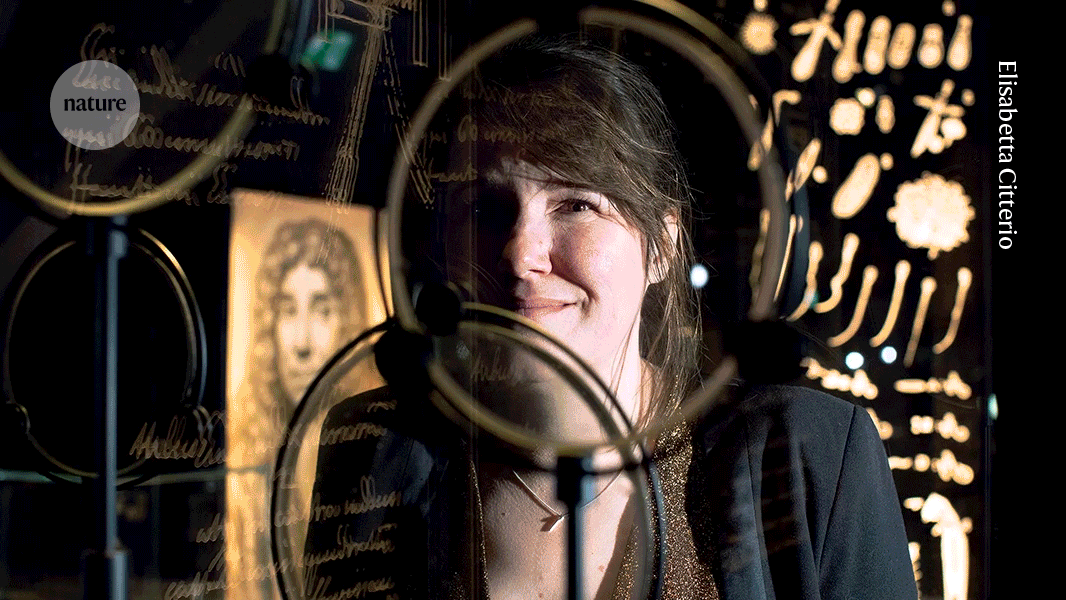Passion, curiosity and perseverance: my mission to capture women in science on camera

Genetics researcher Elisabetta Citterio explains why she felt compelled to photograph 57 women who work in STEM fields

Some of the people featured in Elisabetta Citterio’s photographic project STEM Passion, which opens this month at the Berlin Institute of Health.Credit: Elisabetta Citterio
In 2019, molecular biologist Elisabetta Citterio embarked on a journey to highlight the achievements of women in science, technology, engineering and mathematics (STEM), and to broaden public interest in their research by photographing them. In the course of her project, entitled STEM Passion, Citterio, who studies the molecular mechanisms of DNA repair at the University of Milano-Bicocca in Milan, Italy, has photographed 57 women scientists across 25 research institutes in 9 countries. This month, STEM Passion opens at the Rahel Hirsch Center for Translational Medicine at the Berlin Institute of Health, to coincide with the International Day of Women and Girls in Science on 11 February.
Citterio spoke to Nature about her vision and what led her to STEM Passion.
What inspired you to embark on this project to photograph and interview prominent women scientists?
There are so many women scientists who do really interesting research, but they aren’t well known to the general public. That indifference translates to women’s career paths, too. In academia, fewer female than male scientists progress to professorships. In the life sciences, for example, women receive more than 50% of PhDs awarded, but hold only about 30% of tenured faculty positions. So, my wish was to give visibility and voice to the excellent women from diverse backgrounds who are making a contribution to the advancement of science and society.
How did you choose which women scientists to interview?
I tried to work with women in a variety of positions and career categories, not just in academic research, to highlight that there are many paths that someone can follow after completing their education in science. I spoke to women who work in the laboratory, but also to those who are working in science journalism and communication, funding and industry, as well as women who are influencing policy and public health. I also tried to cut across different disciplines to cover women working in immunobiology, mathematical modelling, cell biology and molecular oncology, for example.
Did you see any unifying themes in their decisions to follow a career in science?
Passion seems to be an intrinsic motivation for pursuing science. With passion comes determination. I see the spark in women’s eyes when they speak about their path in science. Even so, they are not afraid to change that path, if they see that there is something else that they can contribute in a different way.
They really want to inspire the younger generation to follow a career in science. Curiosity also came up frequently, which I guess isn’t that surprising, because curiosity allows you to ask questions and explore the world. Curiosity and knowledge were shared by many of the women I profiled, but so, too, was commitment, hard work, resilience and perseverance. And trust: not only in yourself, but also in your ability to learn during your career.
Why did you choose photography to portray women’s pursuit of science?
I wanted to show that it is normal to be able to see women as scientists. When children are asked to draw a scientist, they often portray a man, although a news story in Science shows that young people are increasingly drawing scientists as women.
That is also why I didn’t choose to portray them all in the lab, to broaden the perspective of what it means to be a scientist. When I travelled to photograph these scientists, I asked whether there were places that were of interest to them, professionally or personally. That’s why you see some of them at the lake or by the sea, because these settings had special meaning for them.
Can you tell me about the exhibition?
My co-organizer, Claudia Cagliano, a communications consultant and adjunct professor at the European Design Institute (IED) in Turin, is the project manager and shaped the storytelling.
Elisabetta Citterio hopes her photography will boost public interest in the achievements of female scientists.Credit: Courtesy of Elisabetta Citterio
STEM Passion is not limited to photography. It includes the portraits, the interviews, and a video installation that comprises all the photographs of the scientists, with an accompanying soundtrack created by composer Andrea Pozzoli. The sounds and the scientists’ voices, in the languages of their diverse countries of origin, blend together, creating a sense of emotional involvement.
The exhibition has already been shown in nine cities, including Milan and Verona in Italy; Lausanne in Switzerland; and, most recently, at the University of Ulm in Germany.
How were you personally affected by the project and the scientists whom you met and interviewed?
It was an enriching experience. I was impressed by the trust with which the scientists welcomed me. I’ve learnt that sharing your experience and making your voice heard is very important. I would also like to add that there is no fixed formula for being a scientist. There are many paths and no set image of who can be a scientist. I hope that my photography reflects that.
doi: https://doi.org/10.1038/d41586-024-00297-0
This interview has been edited for length and clarity.
This story originally appeared on: Nature - Author:Josie Glausiusz


















